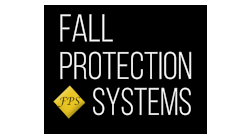Throughout the country, safety awareness and knowledge is a growing concern for both employers and employees in the transit industry. Although the primary focus is brought to light by government regulation (OSHA), it is a growing concern for insurance underwriters, and safety experts in all fields. Based upon the increase that our organization has seen in requests for fall protection systems within the transportation field, we feel it is most important to have a clear understanding of OSHA regulatory requirements.
Often an organization’s ability to protect workers against falls of 4 feet or greater is limited by their ability to identify all the fall hazards within their facilities. It is common to find hazardous site conditions that frequently place individuals at risk. Unsafe hazards have become normal, everyday, operating procedure. Additionally, there can be violations that are missed by a safety audit because they only occur occasionally, that is until something goes wrong.
A common violation is an elevated walking surface with an unguarded edge on a relatively low elevation. Often, these surfaces are used for access to transportation equipment that is temporarily staged in a particular location. The walking surface may in fact be safe for use while the equipment is in place. However, when the equipment is removed, workers are exposed to unsafe heights without any fall protection. There are multiple options to protect workers in these instances, such as handrails and portable safety gates.
Working on elevated equipment without a platform to perform safety audits and maintenance tasks is another common fall hazard. For example, a simple audit that involves a worker verifying that doors open and close properly exposes the worker to fall risks and potentially, fall injuries. In this instance a safety gate will ensure worker safety. It can be set up inside a trolley or train prior to the door opening and can prevent any falls after the doors are opened.
Generally, maintenance tasks are performed atop of transportation equipment. In many cases there are no provisions on top of the equipment to prevent falls. A common practice is to install overhead fall protection that can attach to an existing structure or be freestanding over the equipment. The maintenance worker is able to tether to the fall protection system which, in the event of a fall, would arrest and protect them from sustaining injuries.
Fall hazards at substantial heights are easily identifiable, but violations at lower elevations are often unnoticed. However, it is proven that a fall from six feet is just as dangerous as a fall from ten feet. It is critical that companies involved with mass transit protect workers in these conditions. Should you have any questions as to worksite safety or fall hazards, there are several fall protection experts who can provide onsite analysis and compliant solutions.
Richard Gass is director of engineering with Fall Protection Systems.



